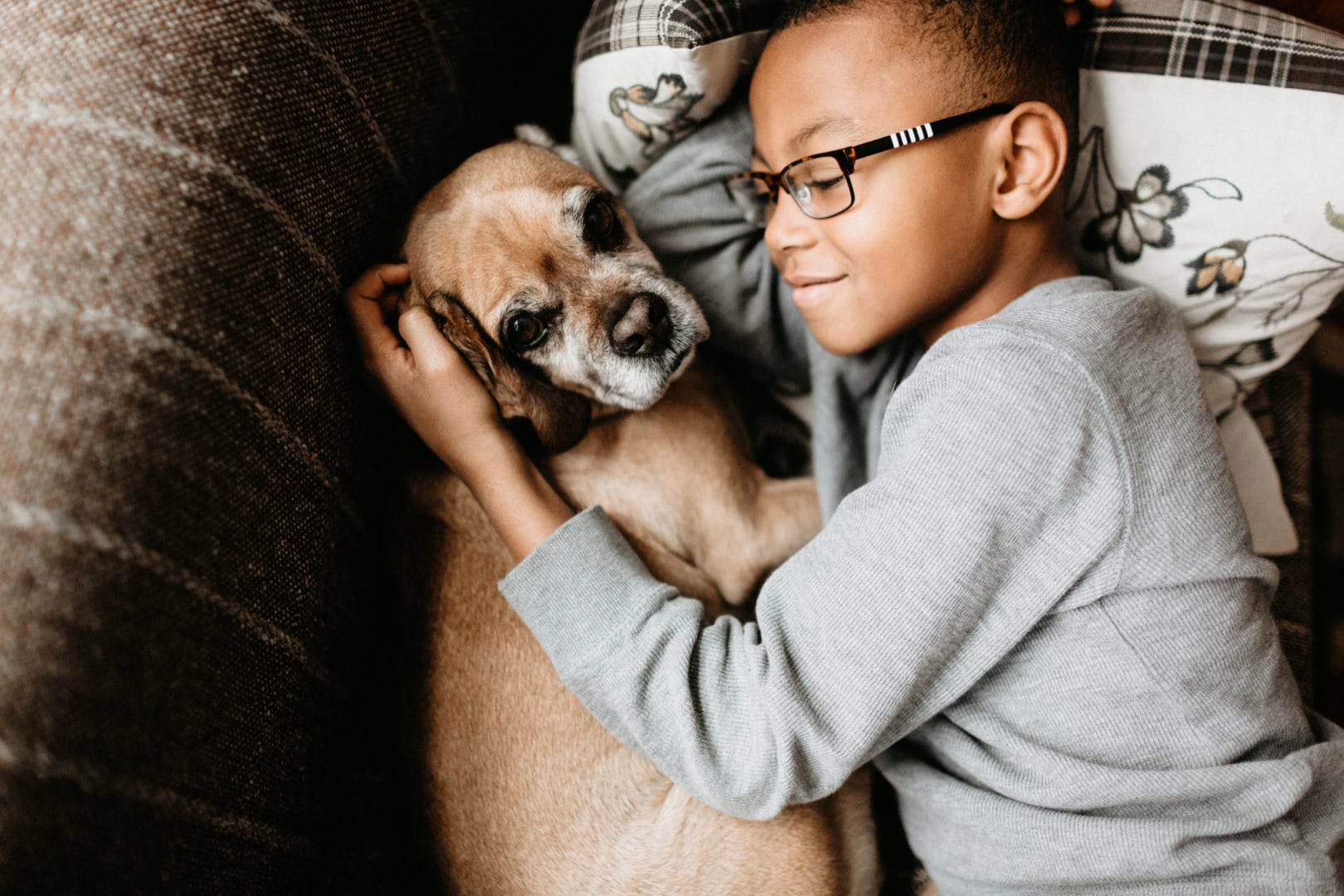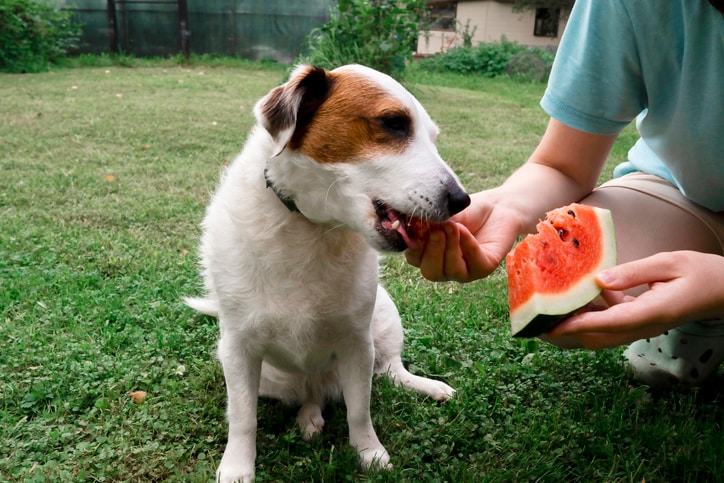Almost every kid asks (read: begs) for a pet at some point or another. And while dogs, cats and even fish come with more responsibilities than, say, a PS5, furry (and fin-y) friends are among the most beneficial of all the classic kid requests.
“The human-animal bond benefits health at every stage of life,” explains Dr. Danielle Bernal, a global veterinarian with Wellness Pet Company. “More specifically, childhood pets can be perceived to be a nonjudgmental and accepting source of support.”
Sounds like a no-brainer, right? But finding the best pet for kids at their specific age is something to consider, as not all animals work well for every age group. Whether you’re looking for a low-maintenance pet for little kids or a super-active choice for teens, here’s what to keep in mind when considering pets for kids of all ages.
Benefits of pets for kids
The benefits of pets for kids go beyond adorable photo ops, according to Bernal and a growing body of research. Here are a few ways pets are great for children:
Pets aid in social development. “Attachment to pets can promote healthy social development,” Bernal notes. “Research has shown pets can increase social competence, promote social interaction and improve social communication and social play in children.”
They promote responsibility. Whether it’s walking the dog or feeding the fish, pets get kids to pitch in and take the onus on an important household task, which, research says, teaches kids responsibility and also gives them a sense of capability.
“Having the opportunity to care for a dependent fulfills the child’s need to feel important and needed, as well as have a purpose,” Bernal says. “Research has shown that successfully caring for a pet is positively correlated to importance, social competence and self-esteem.”
Here are other ways pets can be beneficial to kids, according to Dr. Sara Siddiqui, a pediatric and adolescent medicine specialist at Hassenfeld Children’s Hospital in Huntington Station, New York:
- Pets provide lessons in life, including reproduction, birth, illnesses, accidents, death and bereavement.
- They promote a connection to nature.
- They promote respect for other living things.
- Snuggling with pets can reduce stress and blood pressure.
- Playing with pets can keep children active and healthy.
Best pets for kids of all ages
Whether you’re still contemplating or are ready to make the leap into pet ownership, here are some of the best pets for kids, broken down by age.
Best pets for toddlers and babies
When it comes to pets and babies and/or toddlers, the best finned or four-legged pal is often the one mom or dad had before their child’s arrival.
“In most of these cases, a well-trained and behaved dog or cat makes for the perfect pet for these young children,” Bernal says. “Reasons include supporting their immune system development, a lower chance of allergy development and supporting their emotional and cognitive development.”
However, she adds, at this stage in the game, parents must remain vigilant during all interactions to ensure both pet and child safety.
Pets to avoid for toddlers and babies
On the flip side, there are some pets to avoid when the kids are little, as they can carry bacteria. “Some pets carry salmonella, such as chicks, ducklings, reptiles (lizards, snakes and turtles) and amphibians (snakes and salamanders),” notes Siddiqui. “Avoid these pets for children under 5 and avoid touching them at the petting zoo under this age as well.”
Best pets for school-aged kids
Some of the best pets for kids who are starting or are in school are animals that are “low maintenance but still able to actively engage with kids in fun and unique ways,” notes Bernal. In addition to dogs and cats, here are a few unique pet options (per Bernal):
- Birds, such as budgies.
- Rats and mice.
- Pet geckos.
- Guinea pigs.
- Fish.
While all of these smaller pets do require tank and or cage cleaning, even younger children can pitch in daily by filling their food dish (or sprinkling their food into the tank). By doing this, Bernal notes, it helps establish a pet care routine, and “parents can build upon this as children grow.”
In terms of dogs, here are a few breeds Bernal recommends for this age group:
- Cavalier King Charles Spaniel.
- Cavoodle or Cavapoo.
- Labrador Retriever.
- Golden Retriever.
- English Bulldog.
- Newfoundland.
- Beagle.
“While some dog breeds are better for certain ages, most pets can be acclimated to the home environment,” Siddiqui says. “Having a pet includes the adjustments families make in caring for and meeting the needs of both their family and the pet.”
Best pets for teens
The older kids get, the more active they become, and because of this, Bernal notes, dogs and cats are better options than the “pocket pets” younger children may prefer.
“Even though a dog may have started out as a family dog, for teens and tweens, these animals are great first pets that deliver abundant mental, emotional and physical connections to critically support overall well-being,” says Bernal. “As a more active partner, dogs have the added benefit of being able to join in most family activities, travel with the family on vacation or just be that loyal companion on a walk.”
Cats, she notes, can be as affectionate as dogs, but usually require less intensive care. “Cats are an excellent choice for a teen’s living situation now and in the future when they may move off to a smaller residence of their own.”
In terms of the type of dog that’s best for the tween and teen set, Bernal says it’s best to go with a breed that mirrors the child’s personality and activities.
“For instance,” she says, “an avid runner may look more to a Border Collie or Australian Shepherd, which are known for their loyal devotion and high activity.”
Factors to consider no matter the child’s age
Regardless of your child’s age, there are factors to keep in mind when bringing a pet into the family. Here’s what Bernal and Siddiqui advise considering:
Always supervise little ones around pets
Never leave young kids alone with a pet. “Children under age 3 or 4 should not be left alone with pets,” says Siddiqui. “They may not understand being gentle with pets. Many bites occur during periods of playful roughhousing because the child doesn’t realize when the animal gets over excited.”
Think about childhood allergies
If your child has a dog or cat allergy, it’s best to avoid getting either pet. If you already have a dog or cat and allergies are occurring, Siddiqui recommends the following to reduce or avoid symptoms:
- Avoid allowing the pet to sleep with the child.
- Wash bedding in hot water, and consider plastic covers for mattresses and pillows.
- Wash hands thoroughly after touching or playing with the pet.
- Wash the pet weekly, or as advised by your veterinarian.
- Use a HEPA filter to help with airborne allergens.
- Vacuum and dust frequently.
Know your budget, lifestyle and home constraints
Just because a pet is recommended for a certain age, doesn’t mean it’s necessarily right for your family. “If you are looking for a pet that may be able to easily move through your child’s youth to college chapters, a low-maintenance cat may be a better option,” Bernal says. “If your child has a high activity level and you have larger amounts of space in your home, then a highly active dog could be the right solution. If you are frequently traveling or constrained on budgets, then options like fish may be the right choice.”
Tips for introducing a new pet to kids
No doubt about it, new pets are exciting for all involved. But managing the introduction is key in order to create a happy, safe environment. Keep the following tips from Bernal in mind when bringing a pet home:
- Create an environment that is calm and quiet.
- Allow interaction by the dog or pet on their terms by letting them approach the child.
- Encourage the children meeting the dog or pet to sit calmly and quality. This will encourage the dog or pet to come investigate out of their own curiosity.
- Teach children to safely handle and interact with a dog or pet by encouraging gentleness and respect that will help create a bond. Gently pat a dog on the shoulder, not on the top of their head or tail, for the first introduction.
- While it can be extremely exciting and elicit squeals of happiness and joy, encourage children to speak softly and slowly to not scare the new dog or pet.
- To foster a positive experience for both dog and pet parent, rewarding the dog for calm behavior with a treat (by the supervising adult) helps to reinforce calm behavior.
Other things to consider:
- Children must always be directly supervised with pets at all ages but especially at young ages.
- Always ensure a dog can get away from children if they want.
- Make sure the dog has an area that they can go to for a break if they are getting overwhelmed.
The bottom line
Pets and kids are a great combo, but do a little research before choosing your family’s addition. And beyond that, see how a potential pet reacts when you meet them, as that may give you the best idea of what to expect.
“All ages can benefit from having pets in their home lives and each breed can work best for different families,” Siddiqui notes. “And keep the pet’s personality in mind [not just their type, breed, etc.] when meeting them.”





